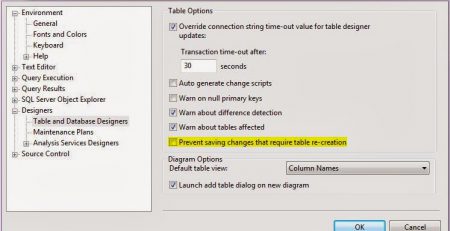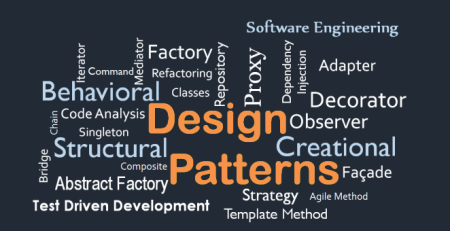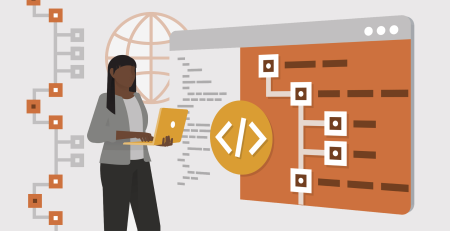Singleton vs Transient: Choosing Your Software Design Pattern
Table of Contents
Introduction:
In this comprehensive exploration, we’ll dive into the intricacies of two prominent design patterns in C#: Singleton and Transient. Navigating the vast landscape of software design patterns is a crucial aspect of crafting robust and maintainable code. Understanding when and how to employ these patterns can significantly influence the structure and efficiency of your software architecture. Let’s embark on a journey through Singleton’s singularity and Transient’s dynamism, with practical C# code examples to illuminate their applications.
Singleton Design Pattern: A Singular Entity
Definition: The Singleton design pattern ensures that a class has only one instance and provides a global point of access to it.
Use Cases:
- Database Connection:
- Ensures a single database connection throughout the application’s lifecycle.
- Logging Mechanism:
- Guarantees a single logging instance, preventing duplicate log entries.
C# Code Example:
public class Singleton
{
private static Singleton _instance;
private static readonly object _lock = new object();
private Singleton() { }
public static Singleton Instance
{
get
{
lock (_lock)
{
if (_instance == null)
{
_instance = new Singleton();
}
return _instance;
}
}
}
}Advantages of Singleton:
- Global Accessibility: Access the instance from any part of the application.
- Resource Management: Efficiently manage resources like database connections.
- Prevents Duplicate Instances: Guarantees a single point of instantiation.
Transient Design Pattern: Dynamic Instances in Action
Definition: The Transient design pattern creates a new instance of a class for every request, ensuring a fresh state for each use.
Use Cases:
- User Authentication:
- Generates a new user authentication handler for each login attempt.
- Data Processing:
- Creates separate instances for processing distinct sets of data.
C# Code Example:
public class TransientService
{
// Class properties and methods here
}Advantages of Transient:
- Fresh State: Each instance is independent, preventing shared state issues.
- Resource Efficiency: Resources are allocated only when needed.
- Scalability: Supports parallel processing and scalability.
Choosing the Right Pattern: A Delicate Balance
- Scope Considerations:
- Singleton: Ideal for scenarios requiring a single, globally accessible instance.
- Transient: Suitable when fresh instances are necessary for each request.
- Complexity and Simplicity:
- Singleton: Offers simplicity with a centralized instance.
- Transient: Provides dynamic complexity, adapting to changing requirements.
- Resource Management:
- Singleton: Efficient for managing shared resources.
- Transient: Optimizes resource usage by creating instances as needed.
Implementation with C# Code Examples: A Comparative Study
Singleton Implementation:
// Singleton class definition (refer to earlier code example)
Transient Implementation:
public class TransientService
{
// Class properties and methods here
}Scalability and Maintainability: A Crucial Decision
- Scalability:
- Singleton: Ideal for scenarios where a single, shared instance suffices.
- Transient: Suitable for scenarios requiring independent instances for scalability.
- Maintainability:
- Singleton: Easier maintenance with a centralized instance.
- Transient: Facilitates easy addition or modification of instances.
Conclusion: Striking the Right Balance
When it comes to Singleton Vs Transient in software design patterns, this has a great impact on how good your codebase is designed and whether it can scale effectively or not. Hopefully, all these explorations have supplied you with knowledge on how to approach the project from its particular point of view.
Therefore, as you think about these dynamics as elaborated in this post, please spare a minute to leave a comment on this blog. How have you come across with difficulties or ease of using Singleton concept versus Transient concept? In what cases do prefer one pattern among others? Other developers facing similar choices will benefit greatly from your observations that will enhance an active debate.
In addition, feel free to contact us should you have any additional queries on software design patterns, C# codings or development best practices that require deeper explorations in our next write-ups. Your contribution towards building a culture of open discussion and sharing ideas is very critical.
Finally, if you are planning to use Singleton or Transit for your future projects and needs help, please do contact us. The staff of Nile Bits consists of experienced programmers who are able to use these technologies and boost your architectural system. We are at your service, providing customized support towards your unique needs.
We appreciate your participation and would welcome your comments in the comment section below!











Comment (1)
I found your comparison between Singleton and Transient design patterns insightful and timely. It’s refreshing to see such a nuanced exploration of these two approaches, as they often represent key decision points in software architecture. Your breakdown of the trade-offs involved in choosing between Singleton’s centralized control and Transient’s flexibility was particularly helpful in understanding how each pattern can impact scalability and maintainability. I appreciate the practical advice on weighing the specific requirements of a project to make an informed decision. Looking forward to more thought-provoking content like this!